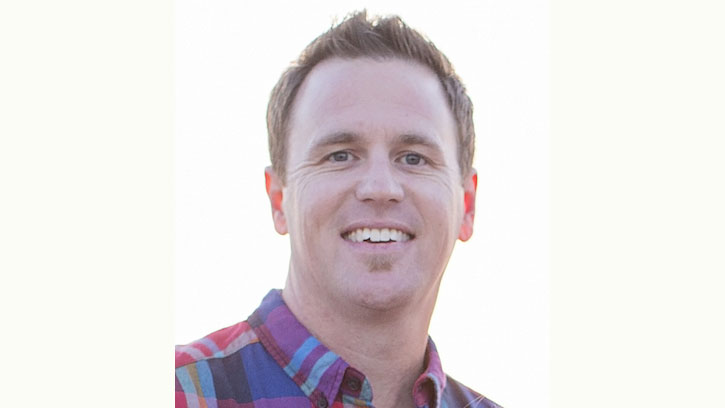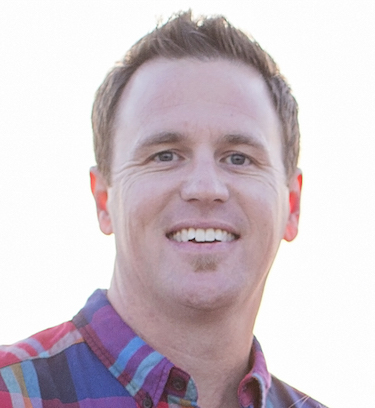Reporting on the State of the Industry at SCN’s Connected Screen Conference at DSE: Darryl Kuder of Red Dot Digital Media


Not too long ago, Darryl Kuder was just an AV integrator doing digital signage projects and trying to outsource content, like everybody else. But too often, clients would contact the content provider directly and get a lower price. So he decided to start a content company that only partners with integrators, and only publishes the prices the integrators would quote to clients.
That makes him a good guy, and a great guy to have on the “State of the Industry” panel at SCN’s inaugural Connected Screen Conference, to be held March 15 at the Digital Signage Expo in Las Vegas, NV. As a preview, we asked him for some of his observations on business at the present time.
What is the client’s perception of digital signage now? From the feedback we hear, I think most people think of digital signage as a tool they can use and update fairly easily to display their message, either in a restaurant, or a lobby, or similar application. They envision dynamic content with a great look to it, and they’ll turn to a company like ours, because a lot of them have dipped their toe into the digital signage world with PowerPoint and some basic graphics they’ve done in house. They like it, they’ve had a good reaction to it, and they’re looking to improve the quality of the design.
What are clients tired of seeing in content design? I still think digital signage is relatively new to the masses. Most people who come to us are still somewhat first-time digital signage users, so they’re not tired of anything just yet. They’ll say they saw something, and they want something similar to that. As an industry, we’re still in our infancy. There are so many possibilities with clients out there today. We haven’t even scratched the surface. Even huge companies are just now getting into digital signage. So there’s a lot of room for growth.
We’ve seen the big chains embrace digital signage, now what about the local restaurant or cafe? One thing we see a lot with small restaurants and small businesses is that they’re still feeling out what it costs to do digital signage. Some are finding that it’s out of their price range.
With the current end-user expectations on cost, when you add up a monitor, player, graphics and the installation—it’s still not cheap. A lot of them are going from a backlit box with a restaurant menu to a three-screen, 47-inch monitor menu. When breaking down costs, that can be upward of $10,000 for implementation, across multiple locations, and the costs add up. It’s still not for everybody just yet. It still costs money to get into the digital signage space.
But it’s a must now. The big companies are doing it, and the local mom ’n’ pop burger joints see the bigger, dominant companies getting into digital signage, and they also want to get into it in order to be on the cutting-edge and create the impression their business is growing. When they do a brand new build out, they can put into the budget. Otherwise they have to find that capital somewhere.
A daily selection of the top stories for AV integrators, resellers and consultants. Sign up below.
How are expectations changing now that digital signage is becoming more prevalent? The companies we’ve worked with, typically they’ve tried to do digital signage on their own, and found that it’s cumbersome, and not easy to update. Now they’re looking for a real signage solution, not just a static image generated by a computer. They want extra flare, dynamic content, and they want to make changes without having to rely on a third party. As result, something we’ve gotten good at doing is creating a template-based design that the end-user can use themselves to make changes to their content.
You’re a BrightSign reseller. We only use BrightSign. It has very easy to use web browser interface, we’ll design the menus and make it so that through the BrightSign network, they can go in and make updates. That’s part of the process that we go through with the client. We figure out what they want to update, and then we set up a template to make it work for them.
How do your partnerships with AV integrators work? With our AV integrator partner program, a lot of companies are looking for solutions that don’t require management from a third party. They like the fact that the integrator installs all of the hardware, and brings us in as means to an end in providing the content, and then the client can do everything for themselves once the project is live.
Do you provide additional support after the installation? We act as a vendor for integrators. They’re considered a reseller for us. So we’re essentially providing graphics as a one-time purchase, if that’s what the integrators wants, so they can bundle it all up as a complete install, and they don’t have to be responsible for it after the fact. Or we also offer a support program, so the AV integrator can sell the job and move on, and we can keep helping the customers with the graphics. It’s up to the integrator.
What is the big, new thing that AV integrators least expect they need to know about the present and future digital signage? One of the surprises that we come across is how many pieces need to be included up front from their side, as far as what they need to sell to the client. With BrightSign, it’s the player, SD card, the web-based content management system, and then you’ve got the graphics. All of these have a cost to them, and then the BrightSign players need to be connected to the network. The most common surprise is with the web-based content management program. That’s a subscription that’s charged for the entire year, and it’s on a per player basis. They have to go back and add that cost into the proposal.
What’s your biggest tech support request? You’d be surprised. Probably 90 percent of the tech support calls we field are network related problems. Whether the IT person has put up a firewall, or whatever it might be. That’s the case even in smaller businesses or restaurants, where they don’t have a professional person setting up the network, but changes may have been made without their knowing. We have clients who call because the new content isn’t downloading to the players, and it turns out after troubleshooting that someone has made a change somewhere on their network and that’s preventing the download of that content. The BrightSign player will cache information, so there will be an image on the screens even if you lose a network connection, but if you make a change, you can’t download the new content. That’s when they notice there’s a problem.
Who in the client organization is handling digital signage now? Who updates the content? We’ve found that the bigger companies, it starts with their IT people. They do the research, find the right player, and they’re starting the whole process. Then they contact us, and we get turned over to marketing department. With smaller companies, usually it’s the owner or maybe they have a web designer who they’ve asked to do their digital signage.
Come see Darryl Kuder from Red Dot Digital Mediaat SCN’s new AV integrator business program, produced in conjunction with Digital Signage Expo (DSE), to be held in Las Vegas, NV March 15-18. The SCN Connected Screen Conference is an all-day seminar on March 15, the day before DSE exhibits open. Industry veteran and SCN editor-at-large Kirsten Nelson will be moderating a series of discussion panels focused on interactive digital signage, immersive branding with large-scale video displays, digital signage integration business trends, and opportunities and future trends. Sessions will be focused on how AV integrators can move beyond the screen and into more complex and profitable digital signage implementations. Guest panelists from high-end digital signage companies and the most successful AV integrators in the space will provide insights on how to build more engaging experiences for clients.
